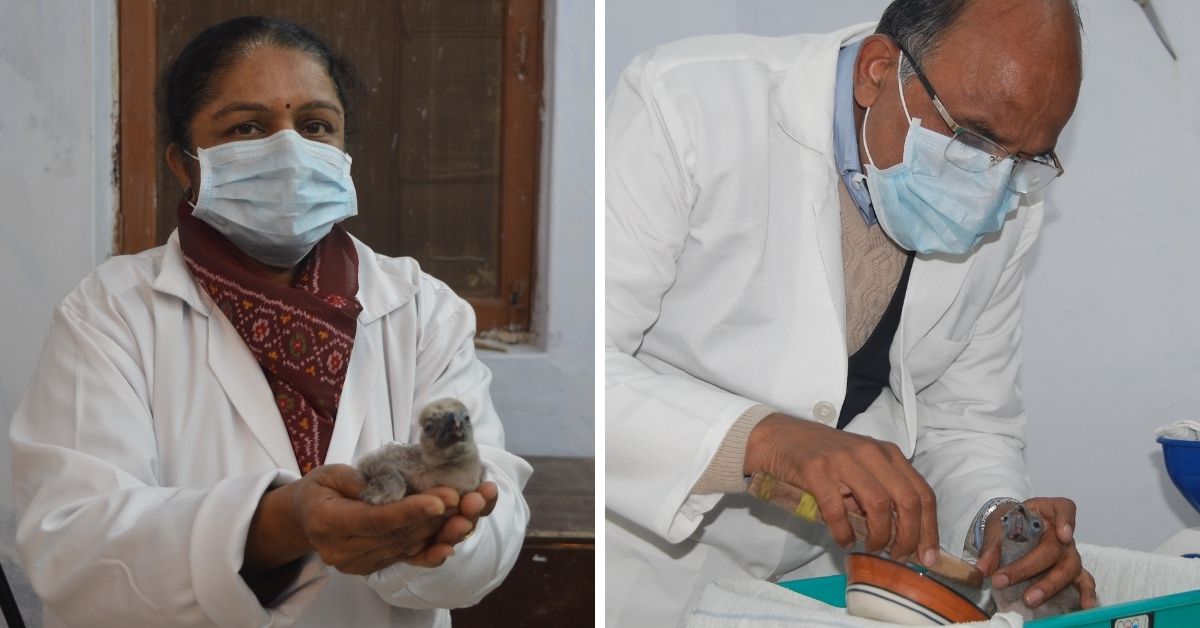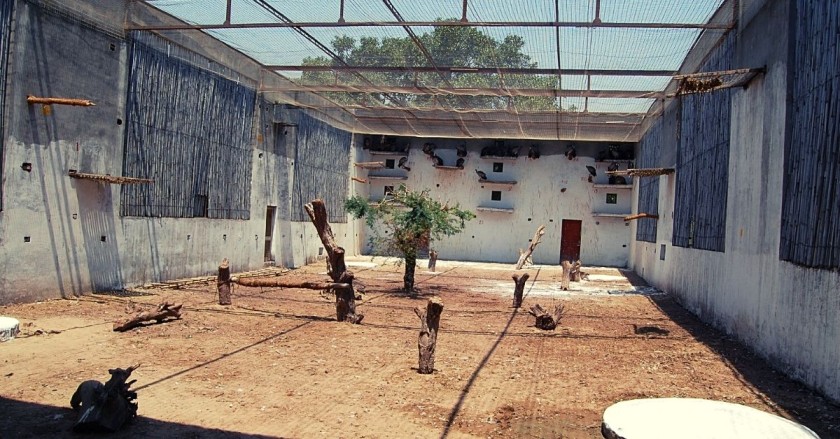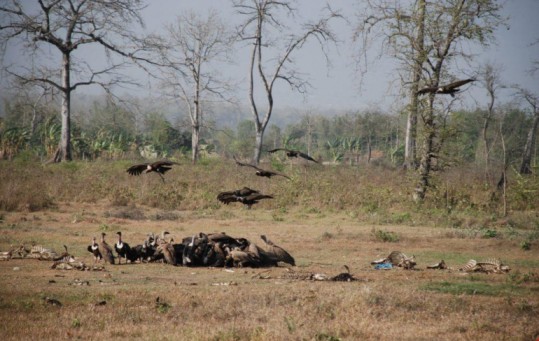It is unlikely for us to care about bald, dangerous-looking birds of prey hovering in the sky. Children are always given a stern warning about staying away from vultures for they can eat humans.
So, when the population of vultures declined, humans did not bat an eyelid in the ’80s and ’90s. Their population steeply decreased by a whooping 97 per cent from 40 million vultures.
The major cause was a non-steroidal anti-inflammatory drug (NSAID) called diclofenac, used to treat cattle. When vultures fed on their carcasses, the drug entered their body which led to renal failure.
This loss had significant effects, from uneaten carcasses posing environmental threats to increased population of rats and feral dogs, which posed risk of disease for humans.
Dr Vibhu Prakash, deputy director and principal scientist at the Bombay Natural History Society (BNHS), was one of the first to notice the sharp decline and the cause behind it. He was posted as a researcher at the Keoladeo National Park in Bharatpur, Rajasthan when 40 vultures died in 1997.
All the dead vultures with drooping necks had traces of chalky white deposits in their organs, according to the postmortem reports.
“The deposits were a sign of visceral gout. Once they feed on the drug, it leads to formation of uric acid which further leads to dehydration. A similar pattern was observed in Pakistan too around the same time. We studied preserved vulture tissues and found 76 per cent of them died because of the drug. Based on these two pieces of evidence, we predicted vultures would be doomed for extinction, if immediate action was not taken. So, we, at the BNHS, decided to set up a breeding centre,” Dr Vibhu tells The Better India.

The BNHS signed an MoU with the Haryana government to set up Jatayu Conservation Breeding Centre (JCBC) for vultures outside Bir Shikargah Wildlife Sanctuary in Pinjore in 2004.
Breeding in a Safe Environment

Dr Vibhu and his team focussed on a three-pronged conservation strategy.
In the first leg, a team of conservationists and researchers lobbied with the government to ban diclofenac.
They also got scientific backing from Cambridge professor Rhys Green. According to his estimates, 0.8 per cent of diclofenac in carcasses is enough to cause death in vultures. So, Dr Vibhu and his team took samples of vultures from over 2,000 locations and found an average of 11 per cent diclofenac in the carcasses.
In 2006, they succeeded and the drug was banned. They found an alternative in Meloxicam. The team at Pinjore carried out a test with veterinarians and found the drug to be safe.
The second and third step was to breed and advocate for a safe environment to release the artificially produced vultures.
Dr Vibhu along with Dr Nikita, his wife, were the principal researchers at the centre, which was financially supported by Royal Society for the Protection of Birds (RSPB). They procured three Gyps species – Slender-billed vulture, White-backed vulture and Long-billed vulture from different states like Gujarat, West Bengal and Assam.

The centre adopted artificial incubation methods like double-clutching and chick swapping techniques to raise the population and over the years three other centres like Vulture Conservation Breeding Centre (West Bengal), Vulture Conservation Breeding Centre (Assam) and Vulture Conservation Breeding Centre (Madhya Pradesh) were started.
It is important to note here that the vulture breeding process is extremely slow as they lay only one egg every year. They start breeding only when they reach age 5 or 6, depending on the species, and they mate for life.
“This is where artificial incubation plays a critical role,” says Dr Nikita.
“If for some reason that laid egg is lost, the vulture will lay another egg within 3-4 weeks. So we took advantage of this double clutching method. We took the first egg and hatched it in the incubator and switched it after 5-10 days with the second clutch egg laid on the nest. In other words, the first egg was raised by the parents and the second one was reared in nursery aviaries under the swapping technique,” she says. The Pinjore centre has 10 octagon incubators that are sanitised after every cycle even today.

The four breeding centres house 780 vultures of different species as of today. Their 2034 target is to release 100 pairs each of the three species.
The first 15 years of the project were spent in rearing the vultures and the next 15 are for releasing them from captivity.
To help the captive vultures adjust in the wild quickly, the researchers attract wild vultures near the breeding centres via goat meat. The meat is kept for both the types so that they can eat and mingle with each other.
Drug Ban and Breeding Centres Not Enough
The ban of diclofenac produced hopeful results as the prevalence of the drug was down from 10 per cent in 2007 to 6 per cent in 2011. According to the research by Dr Vibhu and his team, all the veterinarians had stopped using the drug but multi-dose vials for humans were still in use. This loophole was being exploited for cattle.
“We pushed the government to cut the vial size from 10-15 ml to 3 ml. In 2015, the order was finally passed. This will hopefully ensure that in future, the prevalence of the drug in carcasses will be 1 per cent or less in order to save the vultures,” says Dr Vibhu.

Researchers at all the breeding centres have spent years in research, tests and results to identify a safe environment for the vultures. Unfortunately, all this comes at a very high cost.
From spending Rs 2.5 crores on food (in their Pinjore centre), to Rs 4 crores on the breeding process, funding is a crucial fuel for their journey.
“The ideal situation is to have sufficient financial support to carry out the breeding process and ensure that there is no use of dioflec around 100 km radius for at least two years when releasing the vultures,” adds Dr Vibhu.
All images are sourced from Dr Vibhu Prakash.
Edited by Yoshita Rao

